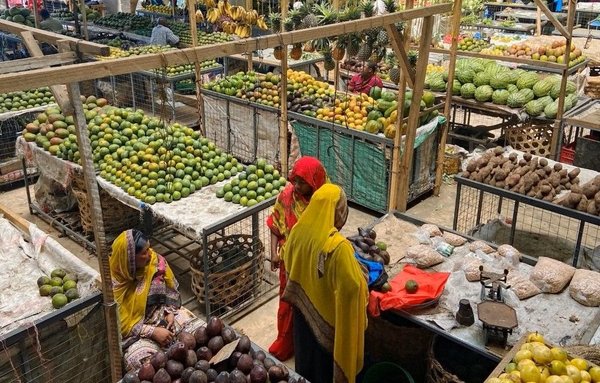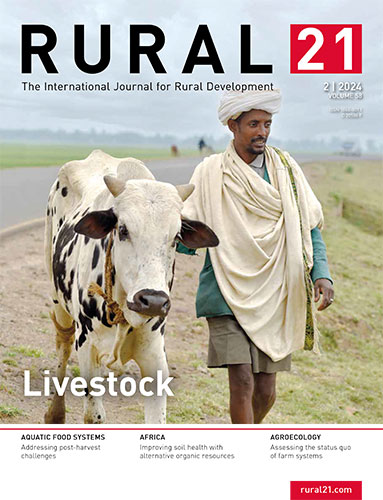 Read this article in French
Read this article in French- Share this article
- Subscribe to our newsletter
Promoting dietary diversity to achieve the “zero hunger” goal
Unhealthy diets are the main cause of health problems and disease world-wide, and diversity is a fundamental pillar of a healthy diet. Poorly diversified diets increase the risk of micronutrient deficiencies, particularly in children and women, which can compromise health and physical and cognitive development.
Currently, the indicators used to assess global hunger and malnutrition focus solely on food quantity, neglecting qualitative aspects of food consumption, such as dietary diversity. The absence of a food quality indicator means that the importance of healthy diets in achieving the 2030 Agenda is underestimated, and that evidence-based action to improve nutrition and health through diet is severely limited.
Experts and governments have been working for several years to develop a new indicator that measures the quality of food consumed as part of SDG 2. It is a complex measure that still needs further research and validation. Switzerland has supported the development of a simple, cost-effective method to measure dietary diversity, a key aspect of food quality. On the 29th April, in collaboration with Brazil, Bangladesh and Malawi, and with technical support from key multilateral agencies (the UN Food and Agriculture Organization, the World Health Ogranization, UNICEF, the International Fund for Agricultural Development and the World Food Programme), Switzerland formally proposed including a minimum dietary diversity indicator under SDG 2. This proposal was presented to the international community at several events in Rome/Italy and New York/USA on the fringe of the High-Level Political Forum on Sustainable Development. This indicator, known by its English acronym MDD (minimum dietary diversity), is already being used in programme monitoring and evaluation to inform policies and programmes in many countries. The aim is to implement it on a wider scale.
Introducing a new measure of sustainable development: an indicator of dietary diversity
Switzerland is politically committed to empowering national and global decision-makers and stakeholders to monitor and ensure access to healthy diets for both populations and the planet. In collaboration with its partners and with the support of several other countries, Switzerland has made considerable efforts over the last ten years to contribute to this goal. For example, Switzerland has supported attempts to make data collection easier, such as the Global Diet Quality Project, which is faster and therefore less costly. This data can then be applied on a global scale, facilitating comparisons between countries and regions and contributing to the early identification of trends.
Incorporating the “prevalence of minimum dietary diversity” indicator into SDG 2 would address a significant data gap in assessing nutritional quality. The inclusion of a new indicator can help to guide the actions needed not only to achieve the 'zero hunger' goal, but also to ensure good nutrition, health and development for populations, upon which all the SDGs are based.
The work of political and scientific dialogue to encourage the addition of a new indicator is currently strengthening action on the ground and in the countries concerned. This approach contributes to other improvements: encouraging an increase in the supply of and demand for healthy food, changing prices to make healthy food more affordable, reorienting policies, adapting food infrastructures, changing individual and collective behaviour and, finally, curbing malnutrition in all its forms. The year 2025 represents the last opportunity to add this indicator before the end of the 2030 Agenda.
(SDC/wi)
More information:
Read the full article on the SDC Website
Link to 2030 Agenda for Sustainable Development
More information on MDD – Minimum Dietary Diversity




Add a comment
Be the First to Comment